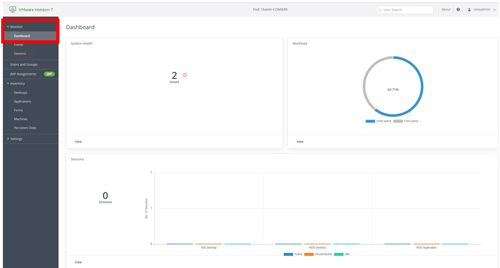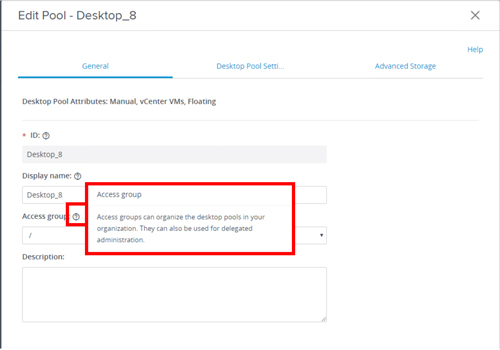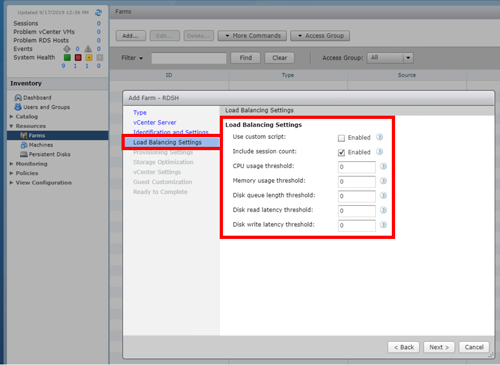What's New in VMware Horizon 7.10
Tom Fenton takes a first look at important changes in the new version of VMware Horizon 7, as well as App Volumes 2.18, CART 5.2 and DEM 9.9.
VMware on Tuesday announced the availability of Horizon 7 Version 7.10, CART 5.2, App Volumes 2.18 and DEM 9.9.
While many know that CART, which stands for Client Agent Release Train, is the client software that is used to connect to a Horizon desktop or application, many may have missed the announcement that VMware changed the name of User Environment Manager (UEM) to Dynamic Environment Manager (DEM).
Both Horizon 7.10 and App Volumes 2.18 have been tagged as Extended Service Branch (ESB) releases. These ESB releases will have active support for two years and will have a service pack (SP) release in six, nine and 15 months. As VMware continues to release their software more often, ESB gives VMware's customers a stable release for companies that have tight requirements on the versions of software they can deploy.
This release does have one huge enhancement in it, as well as a few other improvements. The most visible change that I noticed in this release is that by adding new functionality to the HTML5-based Horizon Console, VMware is accelerating the move away from the Flash-based Horizon Administrator for the management of Horizon. This release also enhanced some Remote Desktop Services Hosts (RDSH) capabilities and troubleshooting capabilities in Horizon 7.10. In this article I will discuss the changes in Horizon 7.10, as well as CART 5.2 and DEM 9.9.
The biggest change in Horizon is that it now supports REST APIs. This is huge because it allows Horizon customers and partners the ability to access Horizon (enterprise edition only) using the tools of their choice rather than having to go through PowerCLI. This release only supports the monitoring functions in Horizon, and you will not be able to make changes to your Horizon environment. But I love that VMware is taking Horizon in this direction.
Horizon Console now has a Dashboard tab that shows services that are in use, the status of the sessions and the overall health of the system (Figure 1).
 [Click on image for larger view.] Figure 1: Console in Horizon Dashboard
[Click on image for larger view.] Figure 1: Console in Horizon Dashboard
Some of the tasks that you can now accomplish using Horizon Console are; select multiple virtual desktops to perform actions (logoff, delete, reset, etc.) on them; show the load status (protocol sessions, broker sessions, etc.) of the Connection Server; show the number of RDSH and available sessions of each RDSH host; display how long a desktop has been idle; and create a desktop pool for floating desktops. These capabilities bring Horizon Console roughly to feature parity with Horizon Administrator, except for the ability to manage ThinApp and Security Servers. VMware also has made changes that will improve Horizon Console's performance, will give better error messages when provisioning instant clones and will provide more information about configuration objects via icons (Figure 2). Horizon Console will now warn you when your session is about to expire.
 [Click on image for larger view.] Figure 2: Information icon
[Click on image for larger view.] Figure 2: Information icon
One of the long needed features in Horizon 7.10 is that you can now take an existing RDSH application pool, duplicate it and then change some of its attributes. This is a small enhancement but one that will be greatly appreciated by Horizon administrators because they will no longer need to go through the trouble of having to create an RDSH pool from scratch to change its attributes. VMware also enhanced load balancing for RDSH farms. Previously for RDSH applications, load balancing was based on active session count or CPU or memory load, and RDSH desktops were based on active session count regardless of the CPU/memory load. The UI now has a plethora of factors from which to choose for load balancing (Figure 3).
 [Click on image for larger view.] Figure 3: Load balancing options
[Click on image for larger view.] Figure 3: Load balancing options
Horizon 7.10 supports the NVIDIA RTX 6000 and 8000 GPUs, Windows 10 Education edition, and Windows 10 1903.
On the agent side, VMware has made performance improvements to the Blast that will lower the amount of CPU usage. When the agent is installed on a Windows Server, the Remote Desktop Services (RDS) role will automatically be installed if needed. The agent now supports Windows 10 1909 and Red Hat 8.
CART 5.2 supports many different devices, and each device supports a different set of features. The Windows, Mac and Linux clients each have an audio optimization pack for Microsoft Teams, and there is audio and video optimization for the Windows client. It has a new Codec in Blast that will lower its bandwidth requirements and will automatically switch between H.264/H.265 and JPG/PNG based on what is being displayed on the virtual desktop. The Mac client now joins the Linux and Windows clients in being able to use the H.265 (HVEC) hardware decoder, which will result in 25 percent to 50 percent better compression.
I usually avoid talking about Tech Preview Items, but the Linux agent is previewing the ability to have multi-session support of application and desktops and publish them using RDS Farm workflows. This is significant because it will enable Linux application streaming. For example, you will be able to stream multiple web browsers (or other applications) from a single Linux VM.
VMware changed UEM to DEM with this release to avoid confusion with products from other vendors also named UEM. DEM 9.9 has a tool to evaluate Active Directory conditions and the ability to collect diagnostic data to help diagnose problems with DEM.
App Volumes 2.18 adds IPv6 support that can be used in a mixed IPv6 and IPv4 or in a pure IPv6 environment. You can now perform a no-outage rolling upgrade to App Volumes. The interface has a Jobs tab that is used to configure all App Volumes background jobs.
You can access the release notes for Horizon 7.10 and Cart 5.1 here and download it from here.
About the Author
Tom Fenton has a wealth of hands-on IT experience gained over the past 30 years in a variety of technologies, with the past 20 years focusing on virtualization and storage. He previously worked as a Technical Marketing Manager for ControlUp. He also previously worked at VMware in Staff and Senior level positions. He has also worked as a Senior Validation Engineer with The Taneja Group, where he headed the Validation Service Lab and was instrumental in starting up its vSphere Virtual Volumes practice. He's on X @vDoppler.